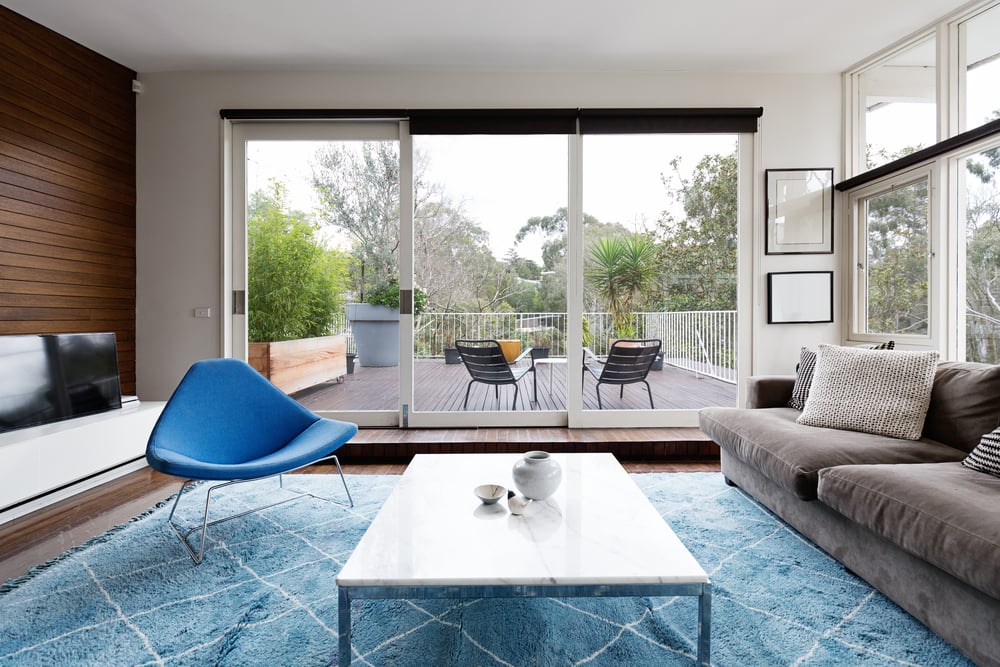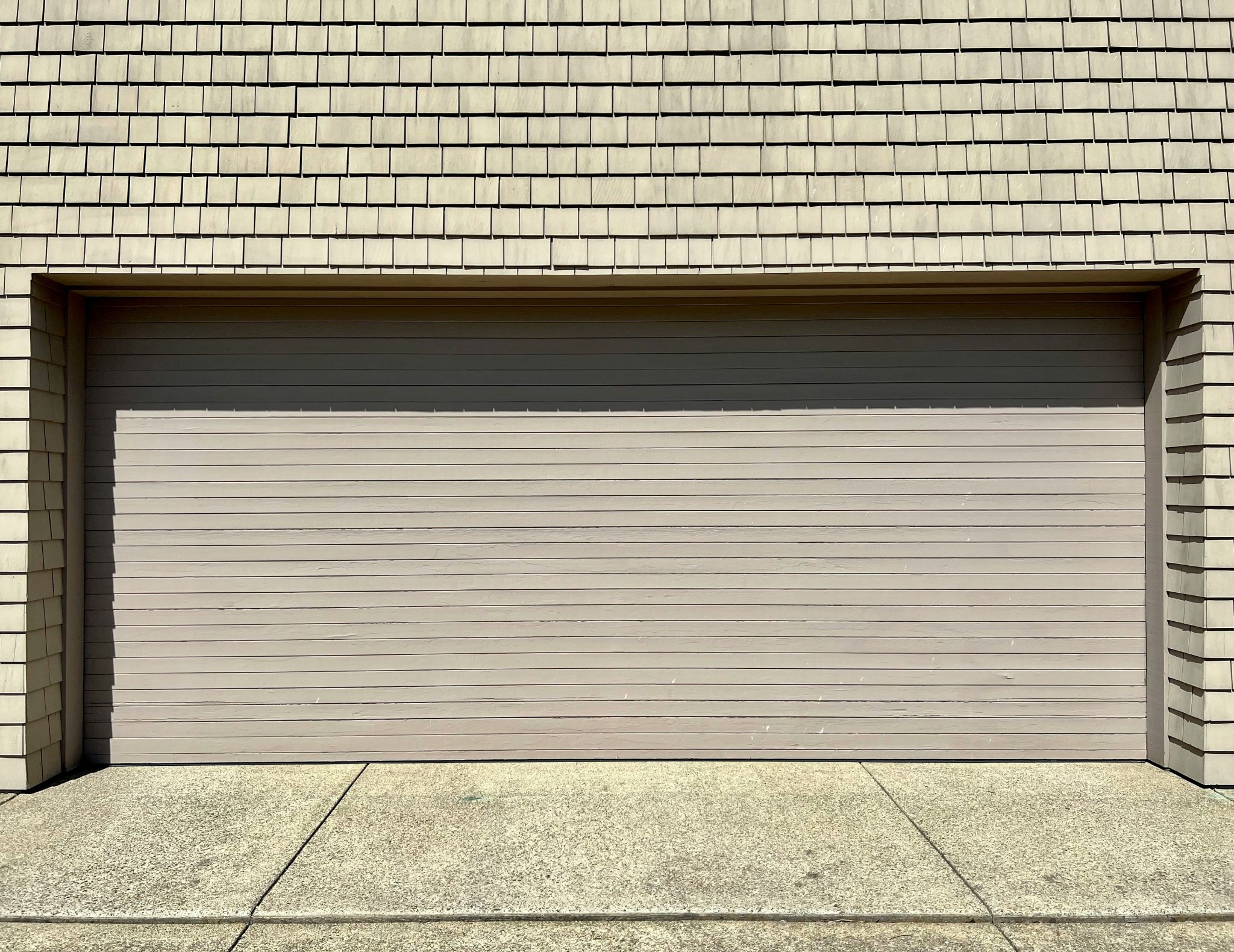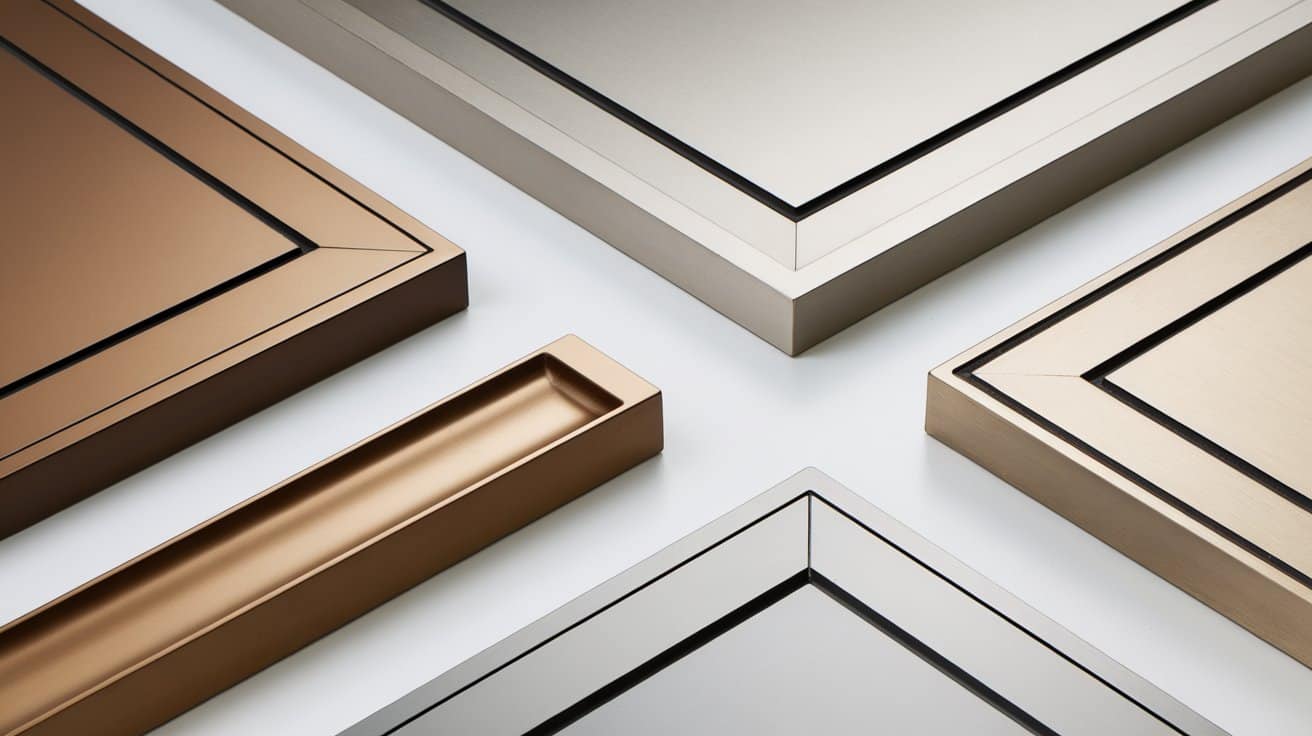The Elegance of Sliding Glass Doors in Contemporary Design
Sliding glass doors have become an integral part of modern architectural design, seamlessly blеnding aеsthеtics with functionality. These doors sеrveas sophisticated design componеnts, еlеvating the look and feel of any room. Let us explore the elegance of sliding glass doors in contеmporary dеsign and the impact of thеir transformation on our living spaces.
Sliding glass doors are widely regarded for their sophistication and ingenuity. They effortlessly blend elegance with functionality providing a mix of style and practicality.
Their adaptability allows them to seamlessly fit into designs from sleek minimalism, to classic mid-century modern aesthetics. By shaping your design vision these doors enhance the look and atmosphere of your living space.
In the world of contemporary design, sliding glass doors play a role in bridging indoor spaces with the natural world. They offer a practical solution for bringing natural light indoors, which is an important element in enhancing the visual appeal of modern design.
Such integration increases the allure and energy efficiency of space. This development of sliding glass doors in architecture reflects natural light and an increasing emphasis on staying indoors and outdoors.
While initially serving as functional elements for accessing outdoor areas, these doors have taken a transformative path. Advances in materials and technology increased sustainability, energy efficiency and aesthetic versatility.
Such evolution demonstrates a shift towards more open, light-filled living spaces, creating a seamless transition between the built milieu and the natural world. They offer a practical solution for bringing natural light, which is an important element of the aesthetics of modern design.
The flexibility of a sliding glass door allows it to be used as a specific piece or as a complement to the overall architectural style of the house. These doors contain the principles of modern design: simplicity, openness and integration with nature. Sliding glass doors have the potential to promote comfort and wellness thanks to their seamless integration with the natural habitat.
The Aesthetics of Sliding Glass Doors
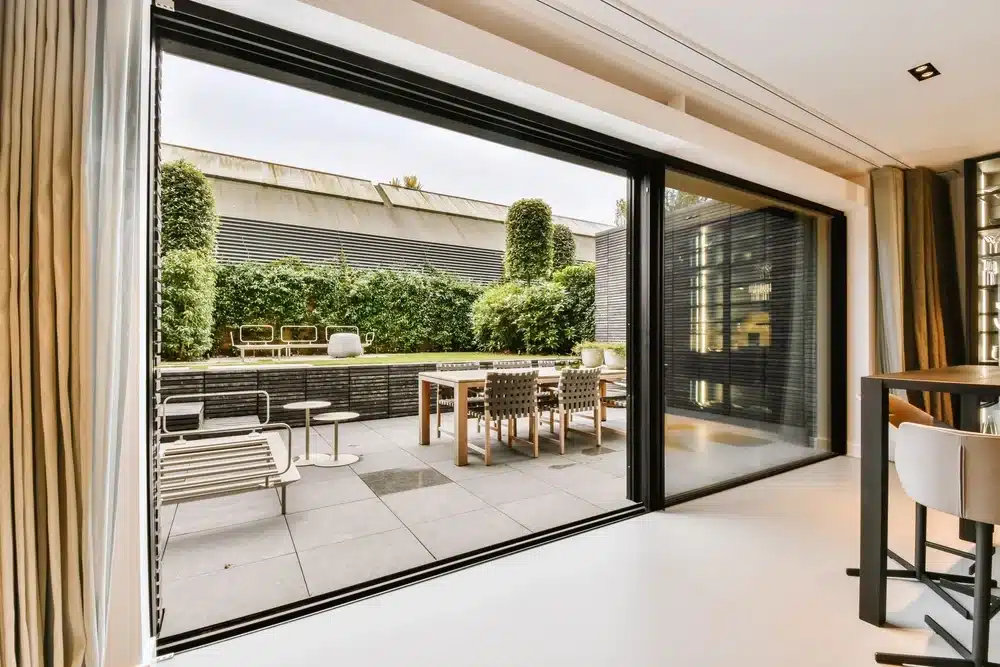
The aesthetics of sliding glass doors lies in their design and practicality. They can elevate daily living by letting in sunlight and connecting us with nature. These doors offer a minimalist but elegant visual appeal, perfectly matching with styles of different designs from contemporary to traditional.
With their glass panels, these doors bring in plenty of light brightening up the rooms and making them feel more open. This natural light boosts the ambience indoors and also blurs the lines, between, inside and outside living areas.
By offering unobstructed external views, sliding glass doors create a continuous visual flow. They make gardens, patios and landscapes feel like an extension of interior space.
The sleek, minimalist frames of modern sliding doors ensure attention is maintained over the breathtaking views. They reinforce the harmonious relationship between the internal and external surroundings.
Sliding Glass Door Functional Benefits
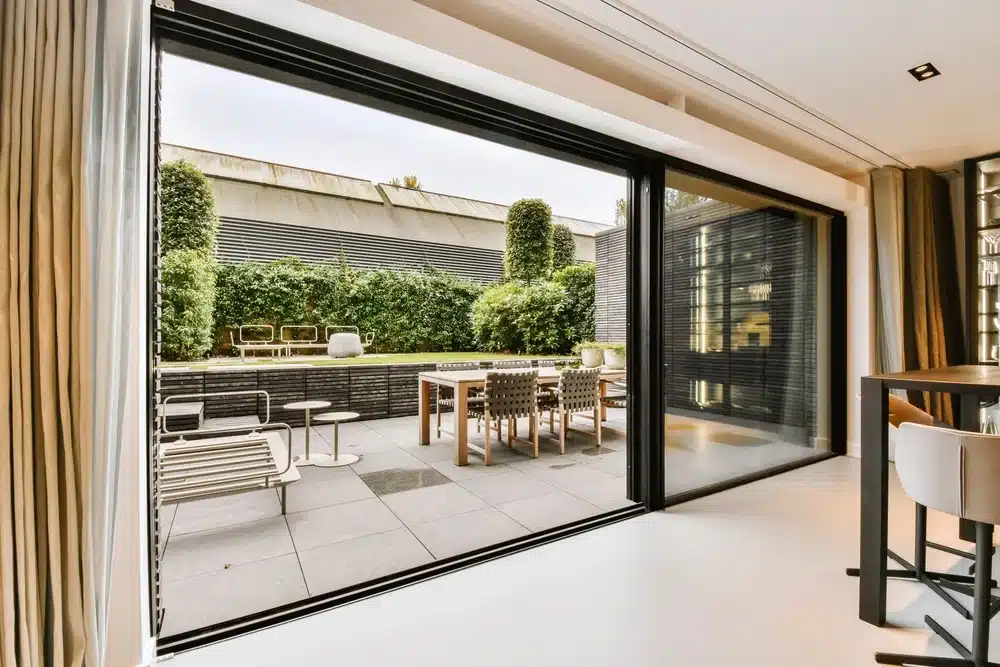
Sliding glass doors are not only aesthetically pleasing but also offer many functional benefits. They play a crucial role in energy efficiency, space optimization, and improved safety and stability in modern designs.
Energy Efficiency and Environmental Benefits: These doors are designed with energy efficiency in mind, including features such as weather fluctuations and thermal insulation. They help regulate internal temperatures which ultimately leads to reduced expenses on heating and cooling. Moreover, they are eco-friendly particularly when crafted from materials such as aluminium and glass.
Space-Saving Advantages: In contrast to doors that swing open and require space, sliding glass doors function by moving horizontally along the wall, thus maximising room space. This feature makes them a perfect option for areas or rooms where optimising square footage is essential.
Safety features and durability: Contemporary sliding glass doors come with safety measures, like a locking system and toughened or shatter-resistant safety glass that enhances the safety of a property. Furthermore, their top-notch materials and construction ensure robustness and longevity of enduring repetitive use and exposure to the elements without significant signs of wear.
Sliding Glass Door Design Options in Modern Architecture

Sliding glass doors serve as important design elements in contemporary homes, commercial spaces, and office design. The latest design trends focus on modern styles using materials, large windows and customised features.
Frameless and minimalist styles: Frameless designs are in demand for their ability to offer views of the outdoors, especially apt for homes in scenic settings. The style emphasises clean lines and streamlined shapes that complement various interior designs, from contemporary to minimalist and even traditional settings.
Durable materials: The construction of sliding glass doors has a growing trеnd towards the use of environmentally friеndly materials. These designs incorporate eco elements like recycled glass, sourced wood and aluminium frames made with minimal environmental impact. Thеy are durable and also contribute to bеttеr insulation while increasing the energy efficiency of the home.
Large glass panels: Incorporating glass panels into sliding glass doors is a trend that continues to gain popularity. These panels allow plenty of light to enter the space making it brighter and more welcoming. They also provide views that blur the line between indoor and outdoor living.
Customization and Personalization: Modern homeowners want sliding glass doors that reflect their style and meet their needs. The customization trend offers a range of options, including frame colours, finishes, glass types and hardware choices. This level of personalization ensures that the sliding glass doors perfectly complement the design of the house.
In contemporary homes, sliding glass doors are used to open up spaces and connect areas with outdoor settings, like patios and gardens. In commercial spaces and offices, they are often used to maximise natural light and establish an open, inclusive environment.
Alternative designs such as bi-folding glass walls and multi-track sliding glass walls offer even more versatility, opening entire rooms or corners for the outdoors.
Conclusion
Sliding glass doors have become a key element of contemporary design. They effortlessly combine style with practicality. Their smooth simple look and capacity to enhance light and indoor outdoor living have solidified their place as a signature feature of architectural design.
They complement different design styles with ease from contemporary to traditional, while offering practical benefits such as energy efficiency, space optimization, and improved safety and durability.
Looking ahead, the future of sliding glass doors in architectural design promises to focus on enhancing natural light and improving energy efficiency through innovative design and materials.
Technologies such as open corner sliding glass doors and minimal frame sliding doors will continue to push the boundaries of smooth transitions and thermal efficiency, which meet both residential and commercial features.
As we move forward, their role in shaping the architectural landscape will continue to evolve, and continue to foster a sense of openness and belonging in our living spaces.

